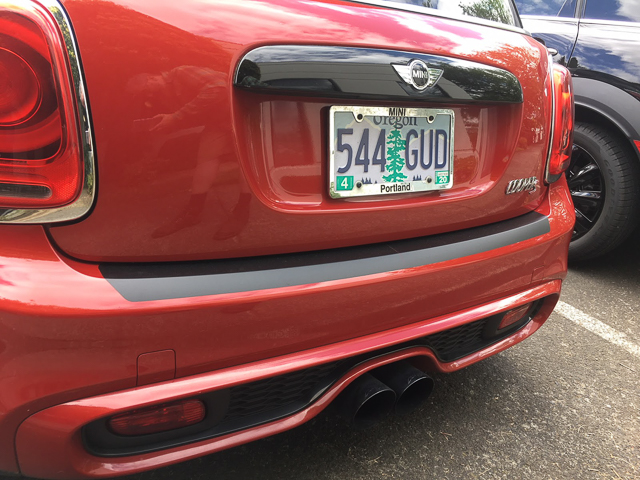THANK YOU for purchasing the Rear Bumper Protector for MINI Cooper F56 (2014-2019) from CravenSpeed. This product is made from the highest grade materials, and is guaranteed to be free from defects.
You can buy our
CravenSpeed Rear Bumper Protector for here
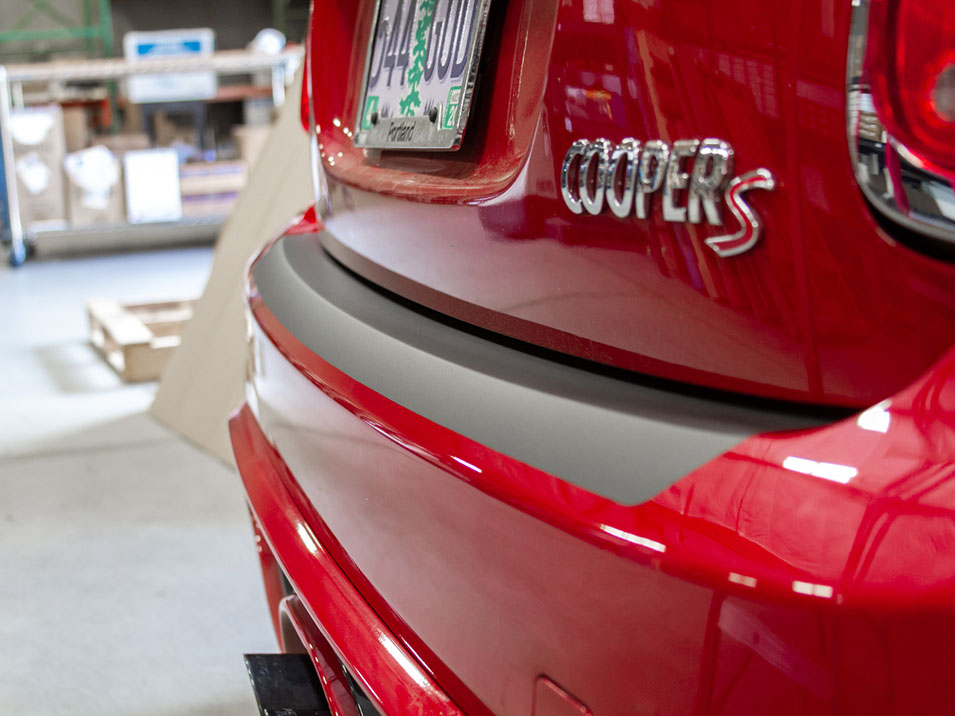
Parts Included:
-
1 x Bumper Protector Decal
Tools Required:
-
Denatured or Isopropyl Alcohol
-
Soft, Lint-Free Cloth
-
Squeegee
-
Spray Bottle
-
Dish Soap
-
H2O
-
X-acto Knife or Scissors
-
Tape Measure
-
Pen or Marker
NOTE:
Installing vinyl decals may seem like an intimidating task, but we have developed this instructional guide to make the process much easier than it sounds. In the unlikely event your decal application goes awry, we offer one-time $5 mulligan kit on each purchase made directly through the CravenSpeed.com website. Just contact support@cravenspeed.com for help.
Prepare the Decal
-
If the decal has not been trimmed already, lay it face up on a flat work surface and trim it down to approx .250" (¼") around the perimeter of the decal with your x-acto knife or scissors.
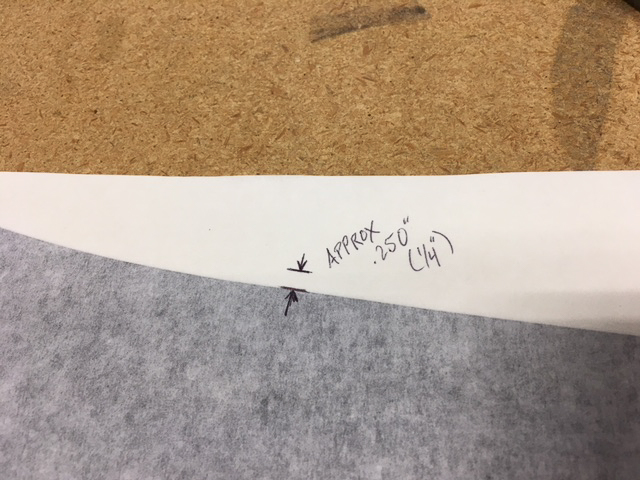
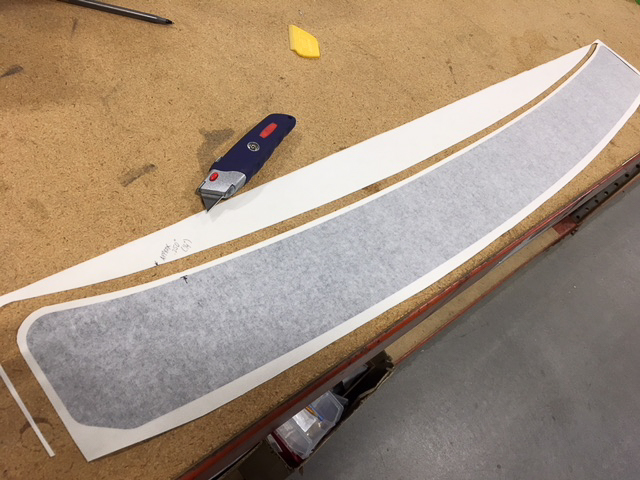
-
Next, use the tape measure to find the center of the decal and mark it on the transfer paper.
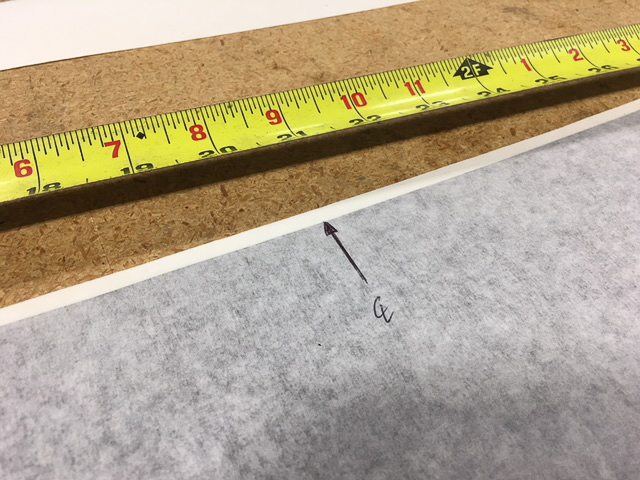
Clean and Prep the Bumper
-
Next, we need to get the bumper ready for the installation of the decal. It's a good idea to run your car through the carwash first, or at least hose down and wash the rear bumper. Once the bumper is clean and dry, pop open the hatch and wipe over it again with a soft, lint-free cloth soaked in alcohol. Make sure to get into the back corner on top of the bumper that the hatch covers up when it's closed. Try to avoid touching the paint with your bare hands once you've wiped down the bumper as the oils from your skin may cause the vinyl not to adhere properly.
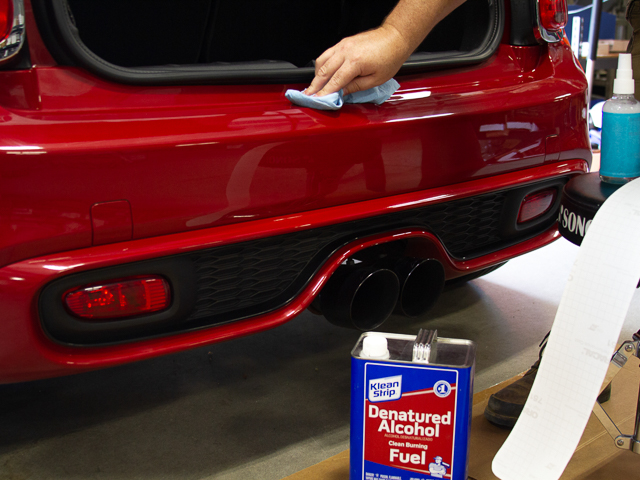
-
With the bumper clean, the last preparation step is to fill a spray bottle with a mixture water and a couple small drops of dish soap. We will use this later as a temporary barrier between the vinyl and the paint so that we have the ability to fine-tune the position of the vinyl.
Install the Decal
-
We're now ready to apply the vinyl. Go over the bumper with just your soft, lint-free cloth one final time to make sure it is clean and then spray the entire top surface of the bumper with your soap/water solution. It doesn't need to be dripping wet, but you want a good coverage of the solution applied.
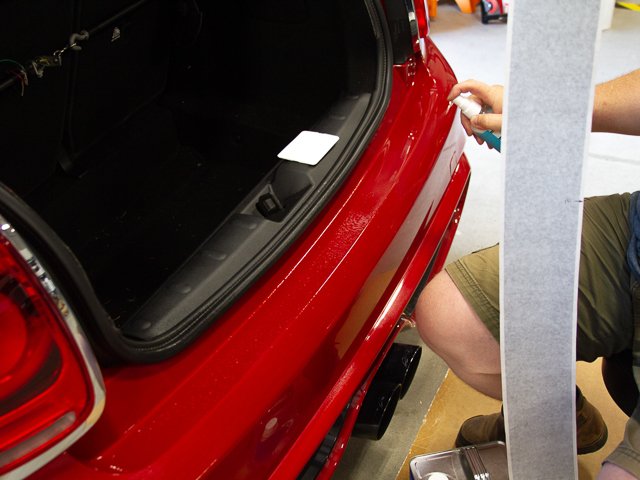
-
Peel the decal completely off of its backing so that the sticky adhesive is exposed. Apply a few sprays of your soap/water solution to both sides of the decal too. Take care that nothing bumps into the adhesive side while handling the decal.
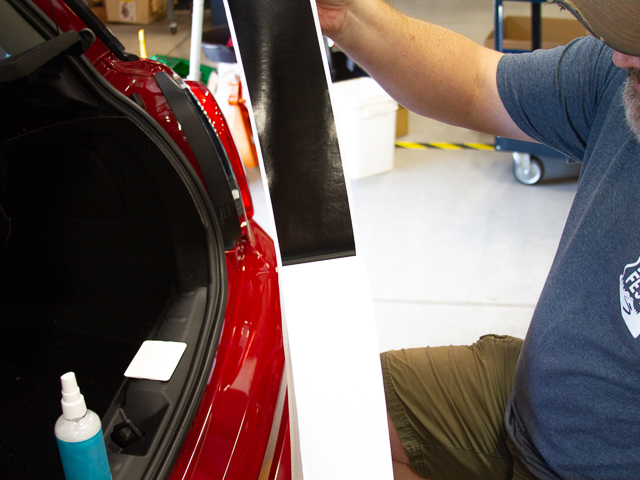
-
Hold the decal outstretched with your hands on either end and gently set the decal down onto the bumper surface, again lining up the center mark with the center of the bumper. The soap/water solution should give you the ability to either pull the decal up again or slide it around to line it up precisely.
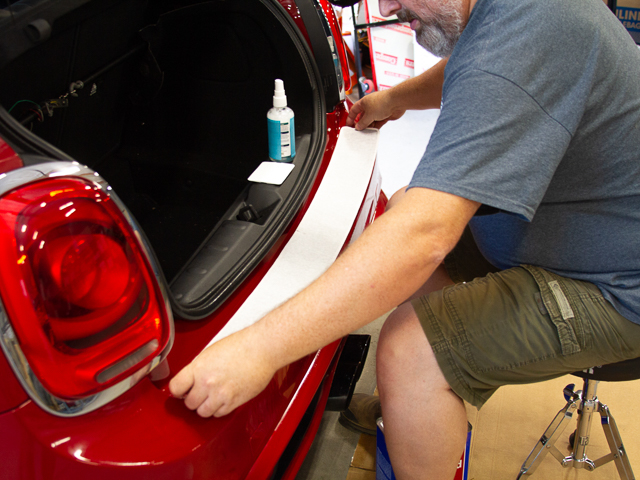
-
Once you’re pleased with its positioning, start from the middle and gently squeegee the soap/water solution out from under the decal. Use the soft, lint-free cloth to clean up any excess solution while you work the decal down.
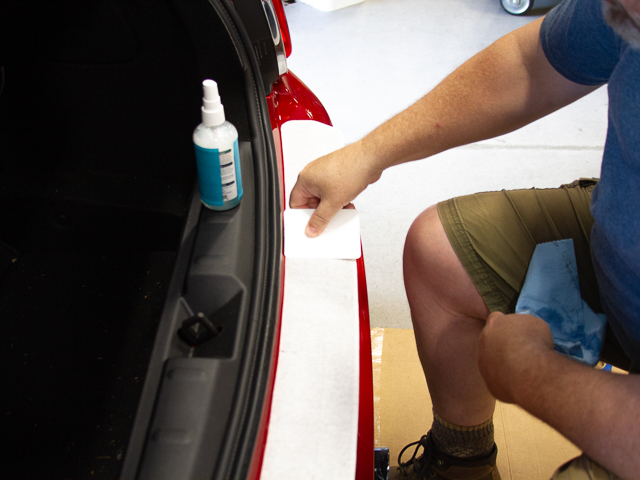
-
Finish the entire topside before you begin to squeegee the decal down the angled part of your bumper. Again, start from the middle and gently work the decal over the edge and down as you squeegee the solution out from under it.
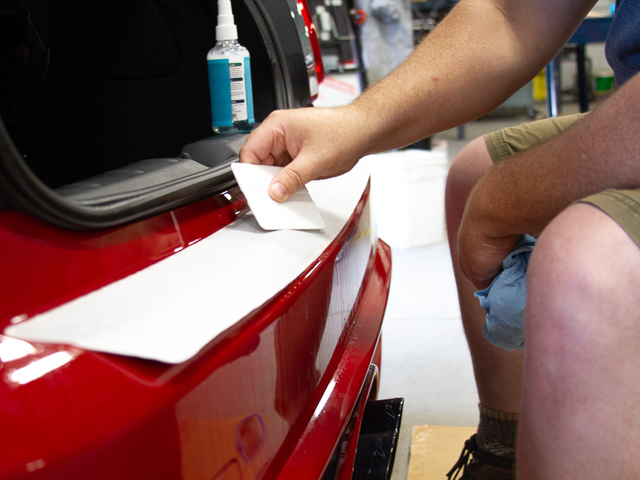
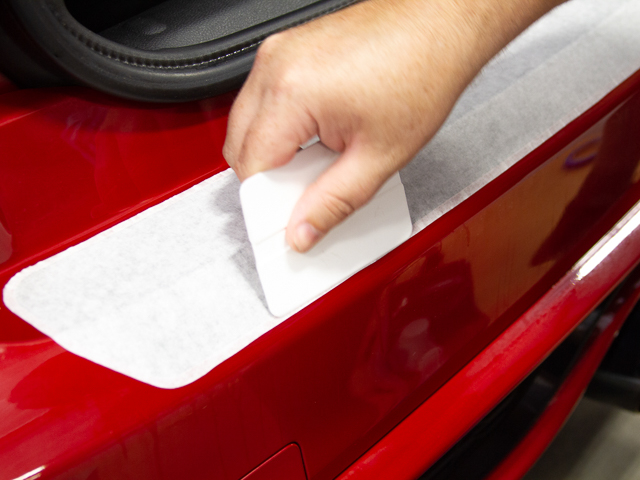
-
Once the decal is completely applied, start from one side and begin to peel the paper backing off of it. Pull the paper back upon itself at an extreme angle to minimize the potential of lifting the decal off the surface of your bumper. If it does begin to pull up with the paper. Don’t be too concerned. Simply hold it down with the microfiber side of the squeegee.
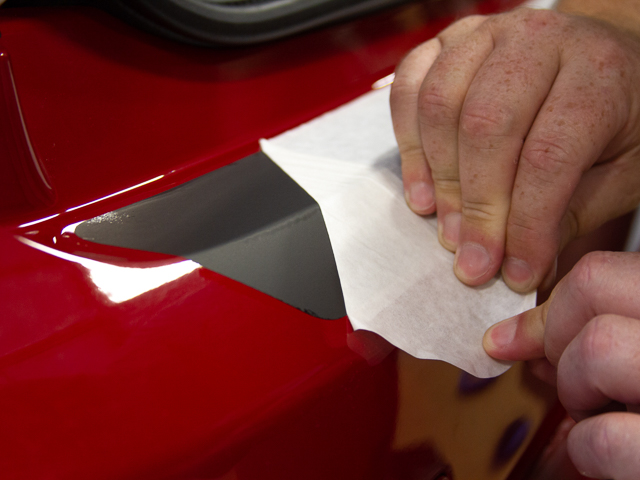
-
Once you have the transfer paper completely removed, inspect the decal for any creases or solution bubbles. In all likelihood you’re probably going to have bubbles to some extent that will need attention. Use the microfiber side of the squeegee to work the bubbles to the edge of the decal and then soak up the solution with the soft, lint-free cloth.
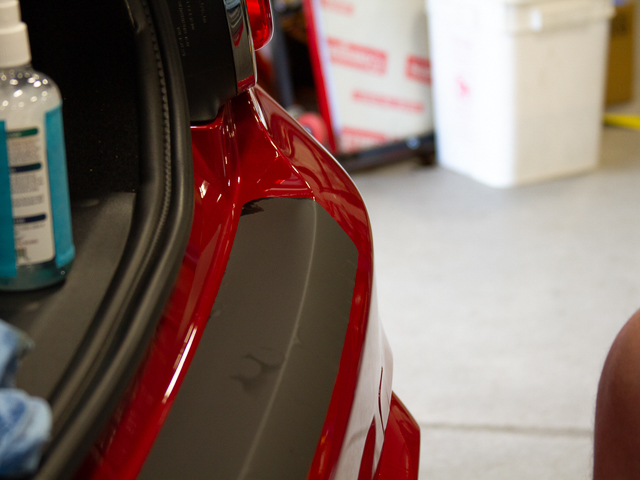
-
For pesky bubbles that don’t want to slide to the edge, try to combine them by pushing them toward one another and then piercing the vinyl with your x-acto knife. You should then be able to squeegee the solution out through this tiny hole. Any minor bubbles or surface imperfections that you can’t seem to eliminate should disappear over the next couple of weeks as the solution evaporates and the vinyl decal shrinks a bit. Leaving the car exposed in the sun will help speed up this process.
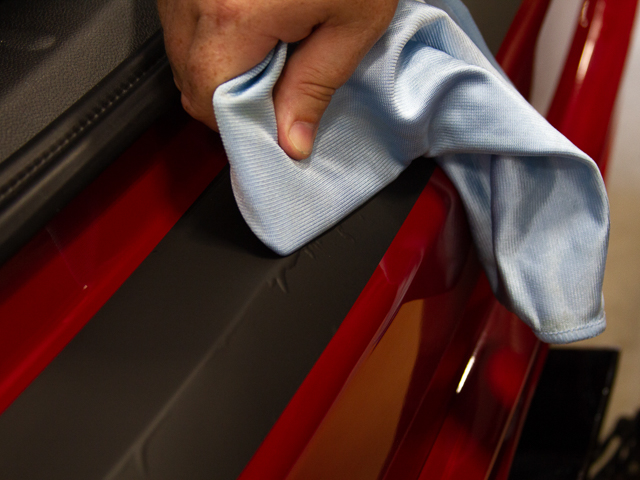
Job complete, congrats!
